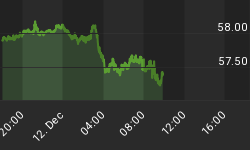Introduction
It's my long-established practice to publish an analysis each quarter of US financial assets purchased and held by foreign investors. The primary objective of the exercise is to keep a close eye on the vulnerability our markets would have to any serious decline in these flows. Or, the added vulnerability our markets would face if there was net liquidation by foreign investors of their US financial assets.
My analyses are timed to the Federal Reserve's release of its quarterly flow-of-funds data. Although the next release will not be out until the second week of December, I believe the recent slide in the dollar's exchange-rate value makes it advisable to revisit the Fed's most recent numbers, published in mid-September. For the purpose at hand, these are more than adequate.
On 9/16, the Federal Reserve released its latest "Z.1" ("Flow of Funds Accounts of the United States"), with data current through the June 2004 quarter. Although the numbers are subject to revision, the data are more than adequate for big-picture purposes. The Fed is due to release its next "Z.1" on 12/9, which will contain data through the September quarter.
More up-to-date numbers are available for most of the series discussed here. But for my purpose now, presenting the data and accompanying text as they were originally published in September is fine. I simply want readers to reflect on how extraordinarily large the numbers are, as well as on the magnitude and speed of their growth. As it relates to foreign holdings of Treasury and agency obligations, there are some current data later in the missive.
Many investors and analysts remain concerned about the United States' large and growing trade and current-account deficits, and whether foreign investors will continue to fund them in an orderly fashion. This is certainly a concern I have voiced on many occasions, with an accompanying warning that serious weakness in the dollar could significantly exacerbate the situation.
With this in mind, access, read and hopefully enjoy: "Dollar Weakness and Its Threat to the US Financial Markets".
















